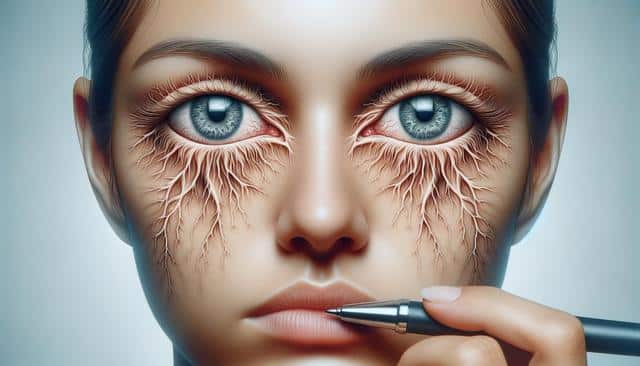What Are Eye Bags?
Eye bags, the mild swelling or puffiness under the eyes, are a common cosmetic concern. They often appear as a result of aging, as the tissues around the eyes, including some of the muscles supporting the eyelids, weaken. This weakening causes the skin to sag, and the fat that normally helps support the eyes can move into the lower eyelids, resulting in puffiness. The accumulation of fluid in the space below your eyes can also contribute to the swelling, adding to the appearance of eye bags. While not typically a sign of a serious medical condition, eye bags can be a source of frustration for those seeking a well-rested and youthful appearance.
Causes of Eye Bags
Several factors contribute to the formation of eye bags, and understanding these can help in addressing them effectively. Some common causes include:
- Aging: The skin loses collagen and elasticity over time, leading to sagging and puffiness.
- Lifestyle factors: Lack of sleep, dehydration, smoking, and excessive alcohol consumption can exacerbate the appearance of eye bags.
- Allergies and sinus issues: These can cause inflammation and swelling around the eyes.
- Genetics: A family history of eye bags can make you more predisposed to developing them.
Recognizing these factors can help in taking preventive measures to reduce the likelihood of developing prominent eye bags.
Preventive Measures for Eye Bags
Prevention plays a critical role in managing the appearance of eye bags. Some effective strategies include:
- Healthy lifestyle choices: Ensuring adequate sleep, staying hydrated, and reducing salt intake can significantly reduce puffiness around the eyes.
- Allergy management: Treating allergies with appropriate medications can help alleviate swelling and improve the appearance of the under-eye area.
- Sun protection: Using sunscreen and wearing sunglasses can prevent premature aging and skin damage around the eyes.
Consistently implementing these preventive measures can contribute to a noticeable difference in the appearance of eye bags over time.
Treatment Options for Eye Bags
Various treatment options are available for those who wish to minimize the appearance of eye bags. These include both non-invasive and surgical procedures. Some popular non-invasive treatments are:
- Topical creams: Products containing ingredients like retinol, caffeine, and hyaluronic acid can help firm the skin and reduce puffiness.
- Cold compresses: Applying a cold compress can temporarily reduce swelling by constricting blood vessels.
- Facial exercises: Certain exercises can improve muscle tone and reduce the appearance of sagging skin.
For more persistent or severe cases, surgical options such as blepharoplasty may be considered. Consulting with a qualified dermatologist or plastic surgeon can help determine the most suitable approach for individual needs.
Conclusion
Eye bags, though often a cosmetic concern, can be effectively managed through a combination of lifestyle changes, preventive measures, and targeted treatments. Understanding the underlying causes of eye bags can empower individuals to take proactive steps in minimizing their appearance and achieving a more refreshed and youthful look. Whether opting for simple home remedies or considering professional treatments, there are numerous ways to address eye bags and enhance one’s overall confidence and well-being.
